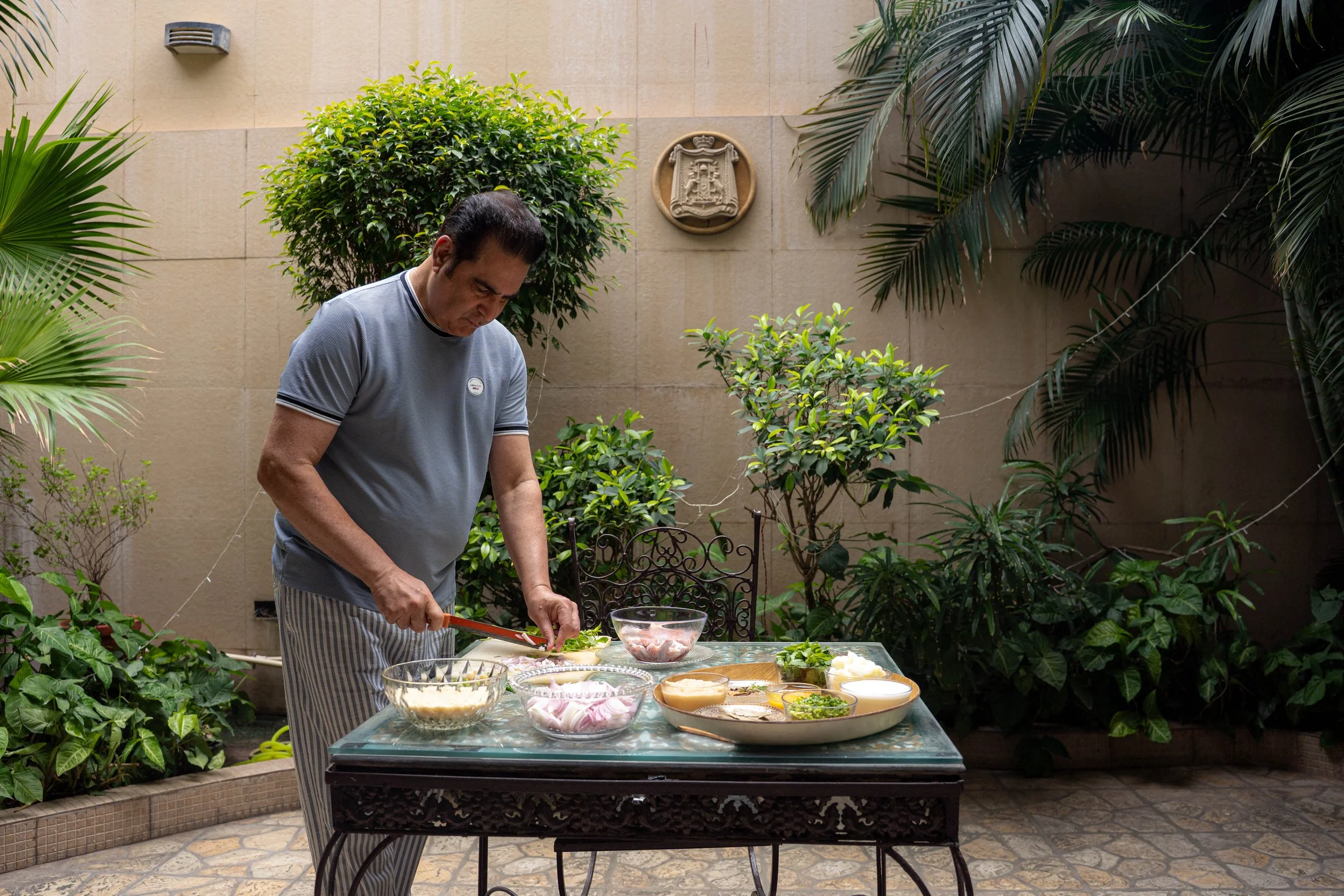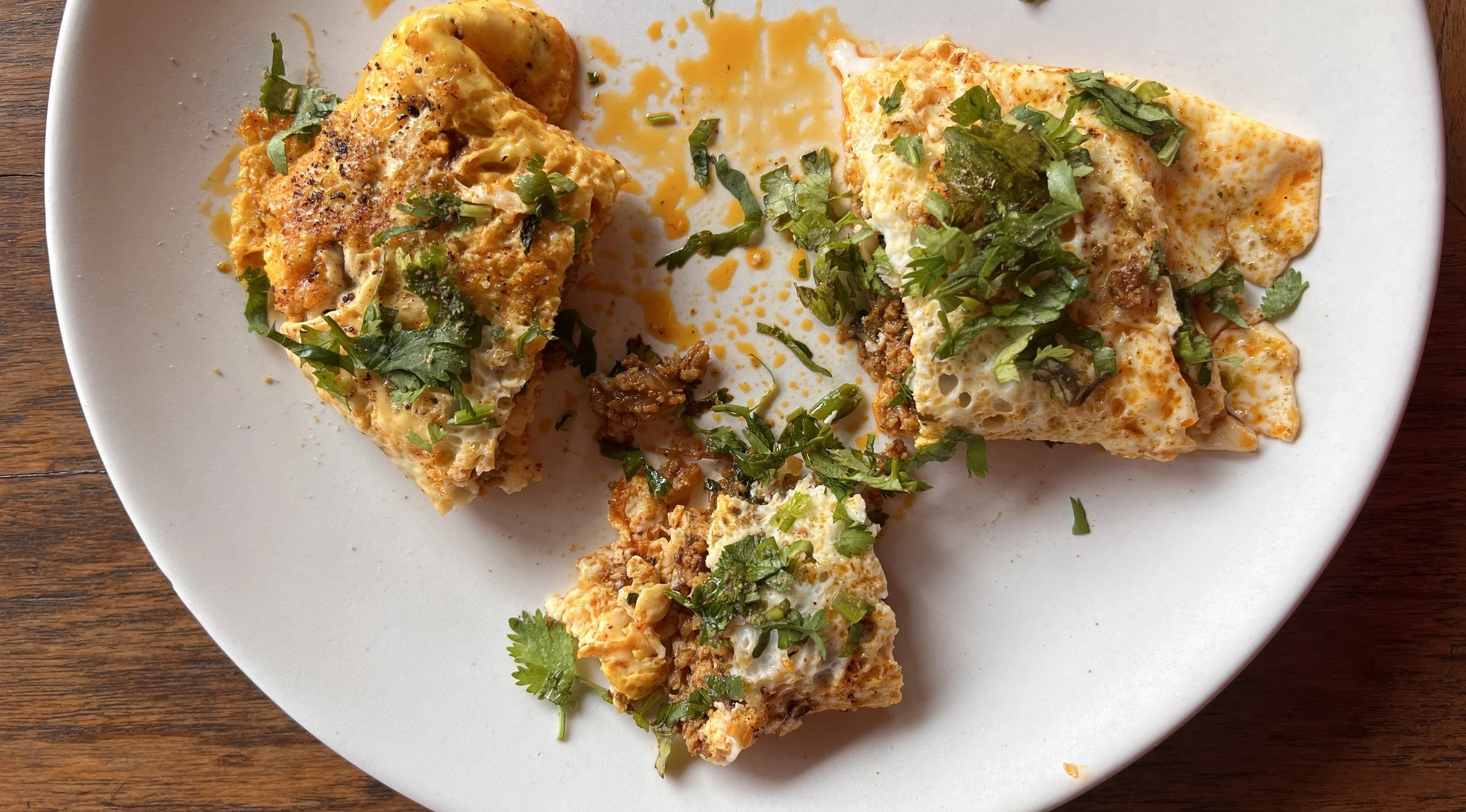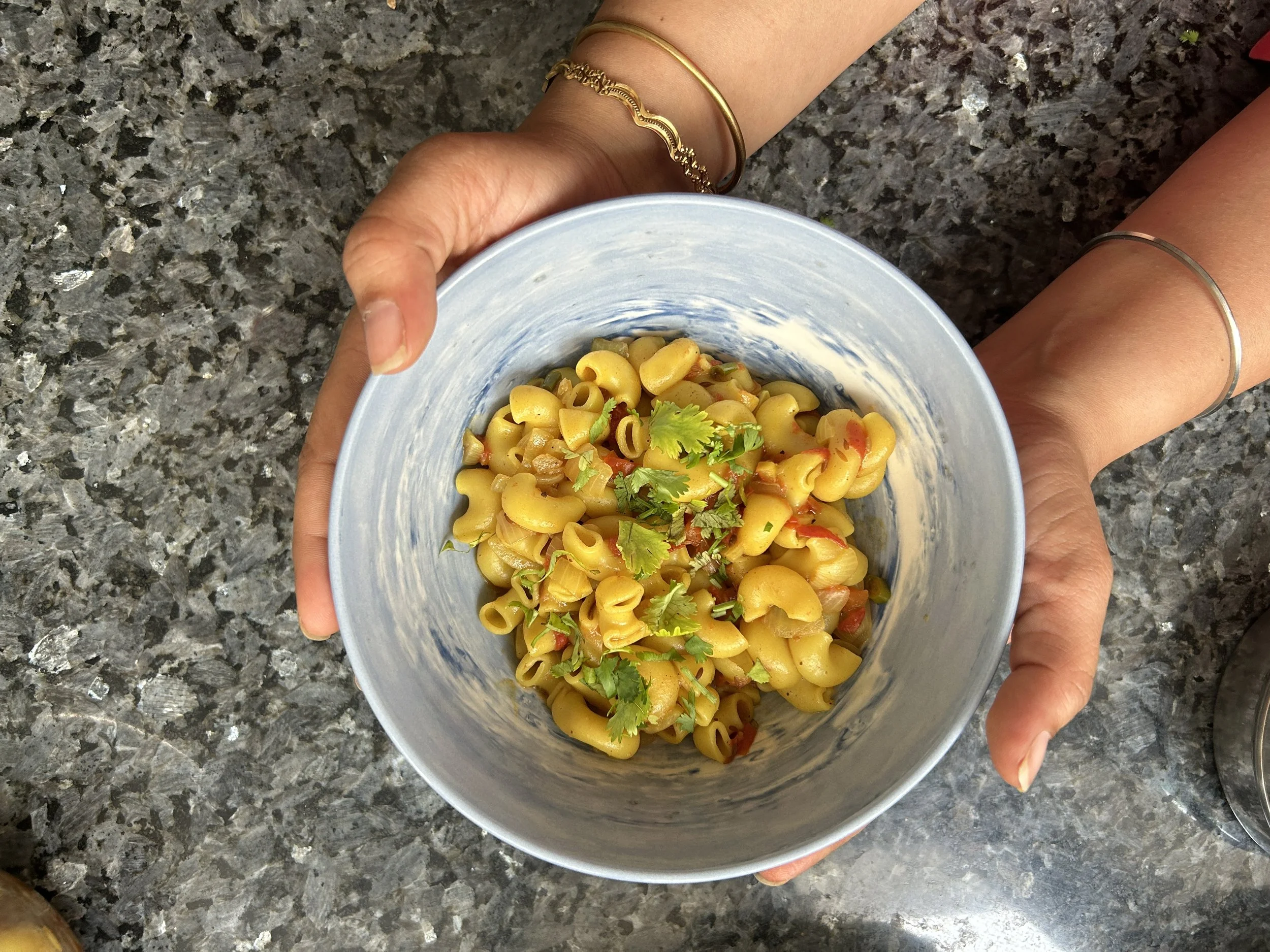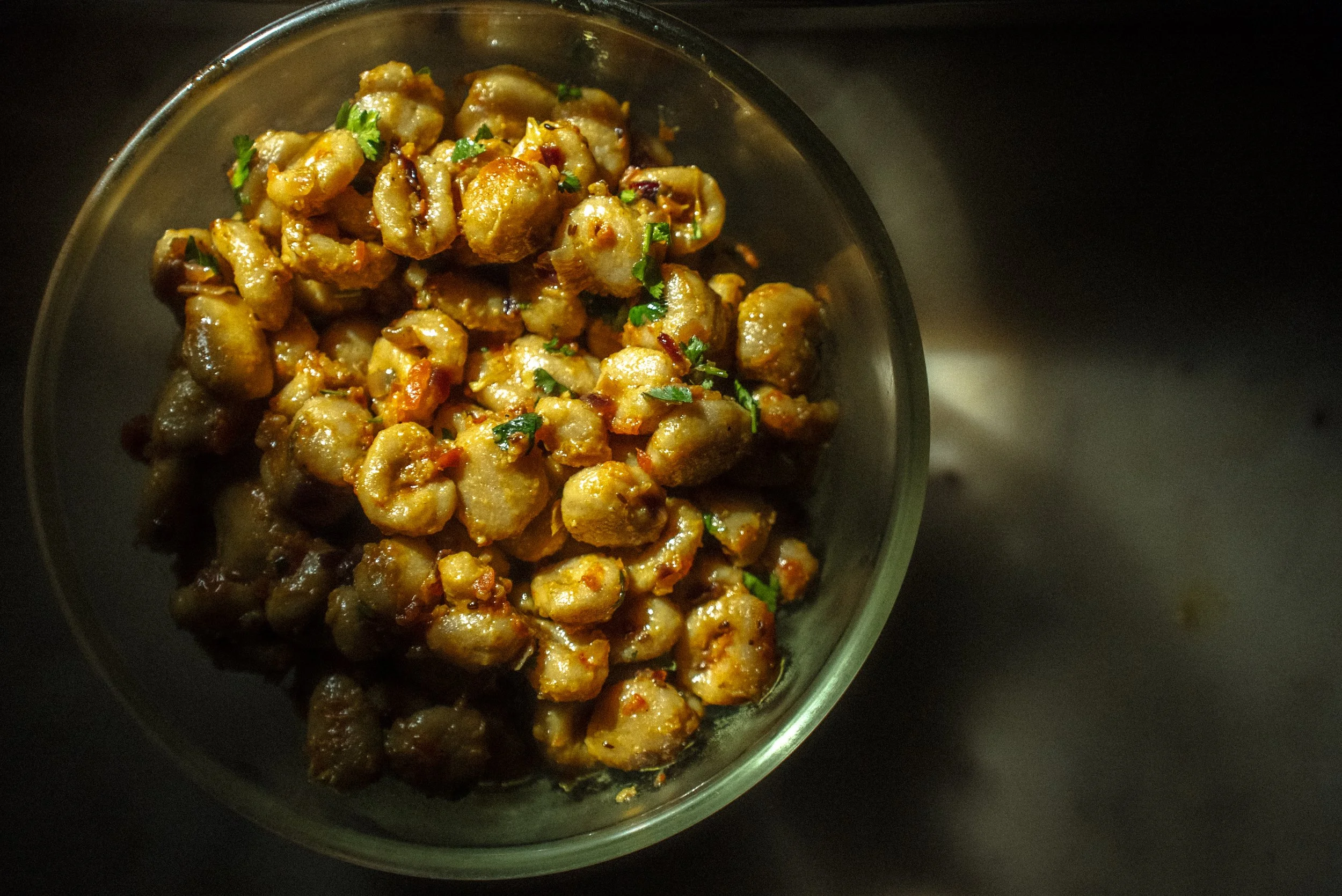#1000Kitchens: The Taste of a Father's Love in Nawab Kazim Ali Khan’s Rampuri Yakhni Pulao

At Goya, celebrating home cooks and recipes have always been at the heart of our work. Through our series, #1000Kitchens, we document recipes from kitchens across the country, building a living library of heirloom recipes that have been in the family for 3 generations or more. In this edition, Anubhuti Krishna talks to Nawab Kazim Ali about a Yakhni Pulao he learned from his father, which is reserved for special occasions.
This season’s stories are produced in partnership with the Samagata Foundation—a non-profit that champions meaningful projects.
Kazim Ali Khan does not cook everyday.
When the Nawab of Rampur does cook, it is an occasion.
Kazim is making us his quintessential Rampuri Yakhni Pulao, and his family is excited. His daughter in law, Ananya, has timed her return from her parent’s home in Chandigarh just to eat his food. “Abba does not cook often, so we are all looking forward to seeing him in action!” she quips. His mother-in-law has dropped by to ensure all goes well While his wife is in Rampur — she keeps a tab on the ongoings in the kitchen through regular phone calls.
We are seated in Kazim’s drawing room at his tasteful modern home in Maharani Bagh in Delhi — he shuttles between this home and his ancestral palace in Rampur, Uttar Pradesh. He tells me about the dish of the day. “The Rampuri Yakhni Pulao is a very special dish and is usually reserved for special occasions. It is made with mutton stock, called yakhni, and a few whole spices,” he says. “I learned to make it from my father. He was quite fond of cooking and this was his favourite recipe. Incidentally it is also the only form of rice I eat.”
Ali’s drawing room epitomises quiet luxury with subtle yet classic elements. A large family portrait dominates the main wall and pictures of each family member, all framed in intricate silver, don the perfectly polished console. The sofas are hand carved and fitted with chintz print tapestry and the glass top coffee table, also made on a hand carved frame, is home to a series of crystals. A tall shelf displays souvenirs from the family’s travels. The other walls, meanwhile, are adorned with hand painted art pieces — some bearing the name of the royal family, some denoting the royal crest and some with flora and fauna from various parts of North India, where the province is located.
“Our ancestors were Yusufzai Pathans from Afghanistan who moved to Peshawar in 1700s. Over time they moved further into the land and settled in current day Rampur in western Uttar Pradesh,” says Kazim. “Our cuisine, originally called the Shinwari cuisine, is very similar to the robust and rustic North West Frontier cuisine. The food is primarily meat-dominated and low on spices. Over the centuries, local elements like spices, lentils and seasonal vegetables were integrated into it and it became what we now call the Rampuri cuisine.”
Interestingly, Rampur’s establishment had coincided with the fall of Lucknow, the capital of the nearby province of Awadh. The Awadhi cooks, out of work in Lucknow, migrated to the newest kingdom in the region. Known for the deftness of their hand, they evolved techniques of cooking, and brought finesse and refinement to the rustic Rohilla food, thus helping the cuisine develop a unique identity. A cuisine that the first family of the region continues to take forward.
An architect by profession, Ali tells me he enjoys promoting the food of royal families from across India. As such, he is a treasure trove of stories. He talks about dishes like gulatthi, an almost solid rice pudding made only the city, chowkhni ka meetha, a dessert is so sweet it sticks to the lips, and the many kinds of kormas and seekh kababs. “Once when I went to Albania for a food festival, I only had one helper with me. While we had carried most ingredients, it was a huge task finding a butcher who sold goat meat and who could get us the cuts we wanted,” he says.
Owing my ancestry to the same region as him, we talk about commonality in our food — the hearty black urad dal khichadi, the umami sagpaita dal, the rich sweets like sohan halwa and patisa, and most importantly, the beautiful long grain rice of the Terai region that he is using today.
By this time, we have moved to the kitchen. I learn that his wife, Begum Yaseen Ali Khan of Rampur, is half Hyderabadi and while known for her Hyderabadi biryani but, cooks the Rampuri food better.
Although Ali tells me he cooks only sporadically, his comfort with the kitchen is evident in the way he manoeuvres his way around the space — he knows what deg (pot) to use, he knows how much of each ingredient is needed, and he handles the huge vessel with the ease of a seasoned cook.
“While they also make yakhni pulao in Lucknow, this version is slightly different — we layer ours with a mix of saffron and milk, lemon juice, and the meat of course but there is no layering in the yakhni pulao of Lucknow. They do not use mint and coriander or ghee but we do, and their yakhni is lighter than ours.”
As Kazim puts together the many elements of the pulao, others join the conversation. His mother-in-law shares her tips on cooking the perfect biryani (as an aside, says she feels like he added the yoghurt to the mutton too soon). Ananya, meanwhile, tells me she cooks only western recipes and that many of her favourite dishes are those that she ate only after coming into this family. The banter between the three generations is not just entertaining but also heartwarming.
By the time the pulao is ready, Ananya has laid the table with pristine cutwork table mats, block printed trivets and classic porcelain plates, all pulled out of her amma’s (mother in law’s) vintage cabinet.
The deg is finally brought in and the whole family sits around the table waiting for Ali to open the container. “This is the moment of truth. There is no way you can tell what state the pulao is until you open the deg, so there is always a bit of a suspense,” Ali chuckles as he gently removes the lid. The fragrance of the pulao fills the room. The rice is perfectly cooked and the meat looks succulent. Like a true head of the family, he first labels the rice out the others ensuring the best pieces of meat are on our plates before taking a small portion for himself. The room turns quiet as everyone tucks into their plates, quietly nodding at each other in approval.
As I informally help myself to the second serving of the rice and raita, I feel just like the other family members. Maybe that is the power of a shared meal — and the Rampuri Yakhni Pulao — that it makes a family out of strangers.
KAZIM ALI’s RECIPE FOR RAMPURI YAKHNI PULAO
Ingredients
For the stock:
1 kilo mutton on bone (gol boti, lamb shank), from the leg
800 grams (+ 100 g for garnish) onions, sliced roughly
250 g (+ 100 g for layering) ghee
500 g yoghurt
15-18 strands saffron infused in half a cup milk
100 g freshly made ginger paste
100 g freshly made garlic paste
100 g coriander leaves
100 g mint leaves
5-6 green chillies slit from the center
Juice of 2-3 lemons
5-6 green cardamom
2 sticks cinnamon
3-4 bay leaf
6-7 cloves
Salt, to taste
For the rice:
800 g long grain Basmati rice
2 sticks cinnamon
3-4 bay leaves
6-7 clove
Salt, to taste
Method
In a thick wide bottomed pan add the ghee and let it smoke.
Next, add the sliced onions and stir, as the onions start to change colour, add in the whole spices stir until the onion turns pink and spices are nicely fried.
Then, add the ginger garlic paste and slit green chilli, some salt and cook until the masala starts to turn brown.
Add the yoghurt and a few spoons of mint and coriander and stir nicely so the yoghurt does not split. Once the oil separates from the masala, put in the washed and cleaned mutton some more salt and stir to coat all pieces.
You now have to cook this mix for about 8-10 minutes until the pieces are sealed and coated well in the masala paste.
Add enough water to cover the meat and cover to cook. This can take about 40 minutes. You have to constantly keep checking on it and stirring the meat so it does not stick to the bottom. Add more water if needed.
While the mutton cooks, wash the rice and keep aside.
In another large pan add about 3 litres of water with the dry spices and salt (about 2-3 teaspoon) and bring to a rolling boil.
As the water begins to bubble, gently add the rice and let it simmer for about 5 minutes or until its al dente, almost half done. The time can change as per the quality of water and rice so it is a good idea to check the rice at regular intervals. Once done, drain the water and cover the rice.
By now the mutton should be almost ready, check and cook further if needed.
When done, remove about 3/4th of the mutton and masala in another vessel and leave 1the rest in the same pan.
To layer, take one-third of the rice and spread over the mutton, top it with a handful of greens and some saffron milk, lemon juice and ghee; next add another layer of the yakhni, spread the rice and saffron, greens and ghee. Repeat the process to create three such layers.
When done, spread the leftover ghee on top and cover firmly. You have to let it cook for about 35-40 minutes on lowest flame.
While the rice cooks, fry about 3-4 sliced onions in ghee until nicely golden and keep aside for garnish.
Turn the flame off after 35 minutes and let the pulao rest for five minutes before opening the pan. Garnish with fried onions, and serve hot.
Note: The rice needs to cook in dum, its own steam, so the lid should be forced down with something heavy — a mortar pestle or even a grinding stone.
Words by Anubhuti Krishna. Images by Sanskriti Bist. Art by Parmita Mukherjee.
Special thanks to our partners.
ALSO ON GOYA






















